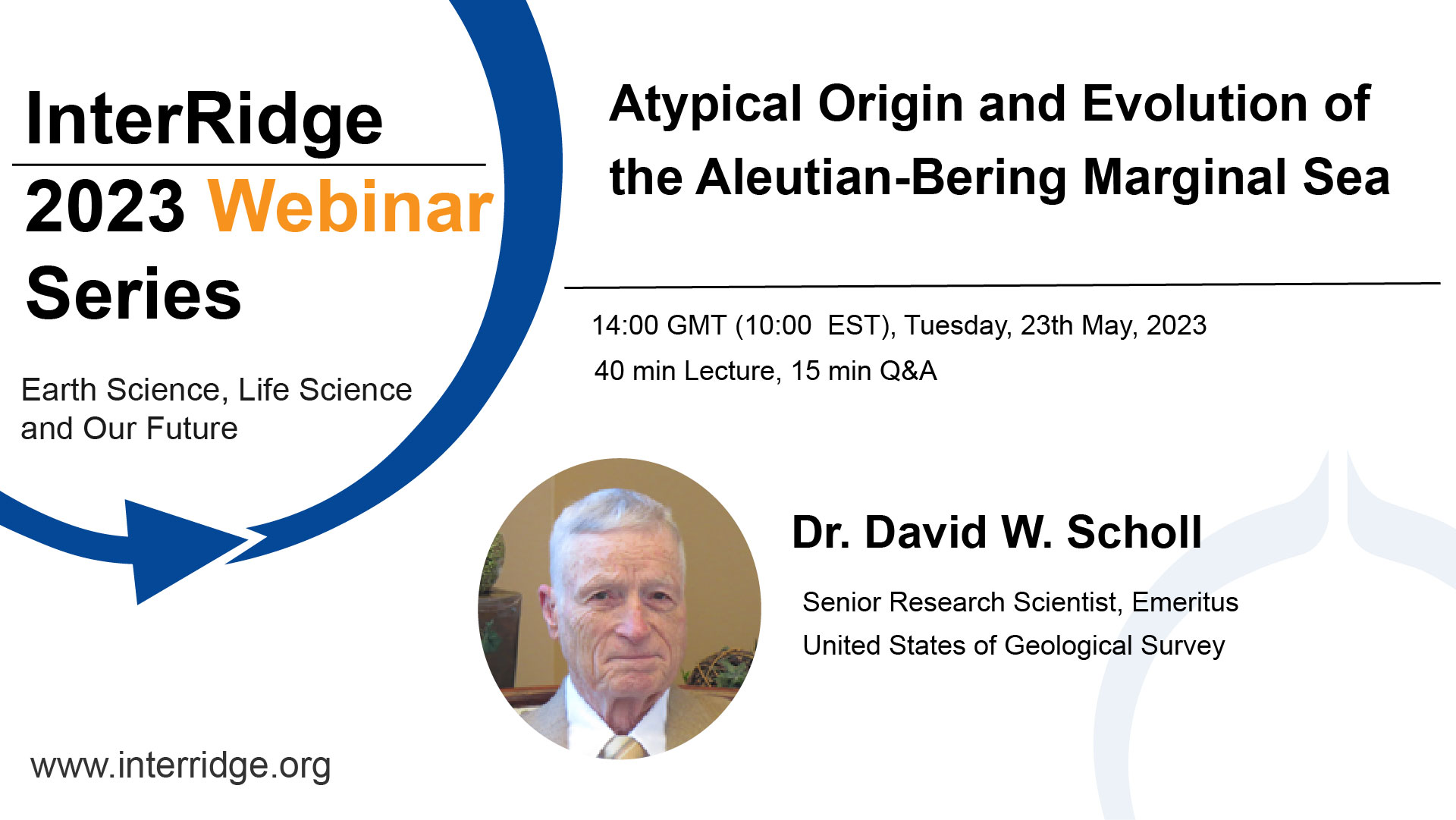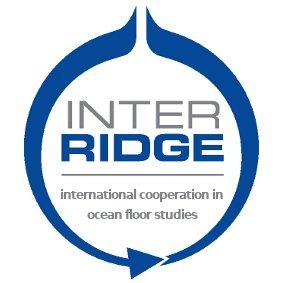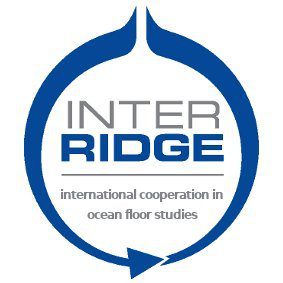InterRidge Webinar Series – Earth Science, Life Science and Our Future

InterRidge 2023 Webinar May
14:00 GMT (10:00 EST), Tuesday, May, 23 2023
ZOOM link: https://snu-ac-kr.zoom.us/j/96340741405?pwd=WDJqVlkwY0xUVW41ZVdtLzlxM0Jzdz09
Meeting ID: 963 4074 1405
Passcode: 815071
Atypical Origin and Evolution of the Aleutian-Bering Marginal Sea
In the early 1970s Dan Karig recognized that forearc rifting initiated a spreading center that generated the characteristic morphology, spreading fabric, and evolutionary history of western Pacific marginal seas or arc-backarc-basin systems. Perplexingly, except for the age of formation (E. Eocene), in the north Pacific the marginal sea of the Aleutian Bering Sea region lacked the physical and geophysical characteristics of western Pacific seas. Why this should be remains a significant mystery. A likely explanation is that the atypical or strangeness of the Aleutian-Bering Sea region is because the Aleutian Basin did not form in situ by backarc spreading but is rather the former NW corner of the Pacific Basin, trapped there by formation of the offshore Aleutian Ridge (arc).
Main points
- The Aleutian-Bering marginal sea differs physically and geophysically from the marginal seas of the western Pacific formed by backarc spreading.
- The atypical or strangeness of the Aleutian-Bering Sea region is because the backarc basin is a trapped (captured) sector of older Pacific Basin crust.
Brief information about Dr. David W. Scholl : Main career and academic interest
David Scholl is a senior research scientist, emeritus, with the United States Geological Survey and former Chapman Chair Professor, University of Alaska Fairbanks. His research studies have focused primarily on subduction zone tectonics in general and more specifically on the origin and evolution of the Aleutian-Bering Sea region, the Chile subduction zone, and the Tonga-Lau region of the SW Pacific. A second research focus has been on the role of sediment subduction in the nucleation of high magnitude ( > Mw8.0) megathrust earthquakes. He holds Bachelor’s and Master’s degrees in geology from the University of Southern California and a PhD in geology from Stanford University. He has participated in more than 15 scientific cruises to Pacific but also to Arctic and Gulf of Mexico research targets, include 4 with the Ocean Drilling Program (DSDP, ODP, and IODP). He served as chief scientists or co-chief scientist on most of these expeditions.
InterRidge Webinar Series Record
Click title and you can find more information.

